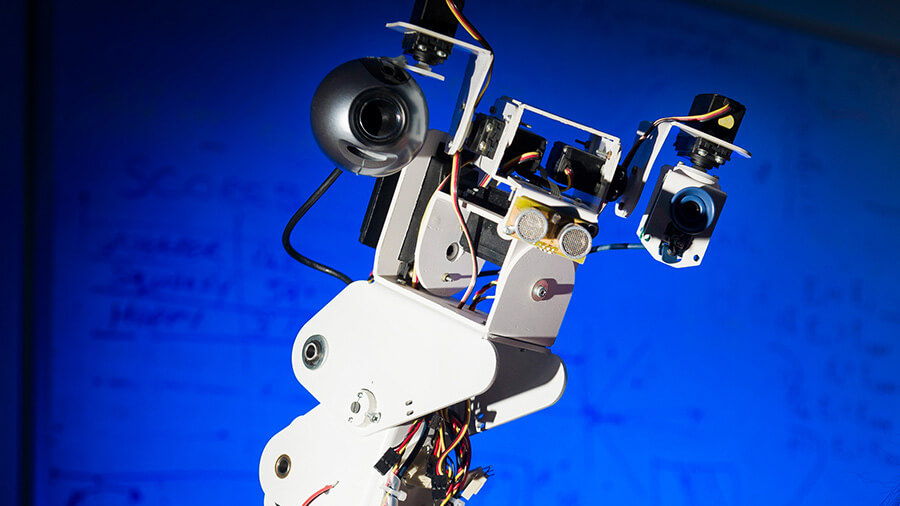Intelligent Systems and Robotics
Intelligent Systems and Robotics provide information on a three-dimensional real-time vision for robotic and artificially intelligent control of an intelligent vision-based reasoning machine using a manipulator. The book provides many authoritative presentations on robotic system operation, autonomous navigation, workspace issues and the mathematical formulation of optimal algorithms for the solution. The text provides a thorough account of sensors and controls used in industrial, transportation and manufacturing operations, in the laboratory and in the home. Part one of the book describes industrial process applications and their importance to the economic viability of human activity. It describes processes such as material handling, material processing, machine tooling, assembly, painting, auto detailing, product design, electrical and optical testing, and manufacturing assembly.
Part two describes the emerging field of Machine learning and its potential to apply to industrial and commercial activities. The book describes the development of robots that can be taught to perform specific tasks by attaching to them remote sensing units and determining their results. This chapter describes the science of learning, the theory of natural selection and evolution, and the engineering aspects of creating an intelligent robotic system. The book then describes four classes of intelligent robotic systems and robotics, i.e., autonomous, human-directed, and mixed.
The book includes numerous illustrative case studies to illustrate its topics. Illustrations include those from the U.S. military where robots are operating fighter planes, trucks, and helicopters. The illustrations also provide a theoretical insight into areas including the development of self-driving cars, trucks, planes, and even skateboards. Part three describes different types of robotic systems, focusing on the operational areas. Areas include industrial, transportation, surveillance, defense, and healthcare. The book then turns to future scenarios focusing on national security, global economics, warfare, and alternative energy.
IISR addresses various issues related to the subject matter of Computer science, such as artificial intelligence, cognitive science, programming languages, computer systems, msc in manufacturing, and others. It addresses areas in the broad range of Computer science including artificial intelligence, cognitive science, programming languages, artificial intelligence systems, computer systems engineering, machine learning, and others. The book contains detailed discussions about each topic in a relevant survey and concluding chapters cover each topic in detail. IISR concludes with an overall outlook for the future of IISR.
The fourth chapter in the fourth edition of IISR Fourth edition discusses the applications of computer vision in the fields of manufacturing, healthcare, and consumer protection. Illustrations from computer science fiction movies including Star Wars, Jurassic Park, and the Rise of the Silver Surfer, as well as from popular books such as Artificial Intelligence, Narnia, and Iron Man provide examples of how computer vision has been used to enhance visual perception. It also reviews important areas of current research. This chapter also reviews the areas of robotics, artificial intelligence, and cognitive science which are essential for the study of contemporary intelligent systems androids. The fifth chapter covers topics related to the field of robotics.
Chapter six addresses new advances in this area. It reviews the advances made in areas such as software and hardware architecture, design concept, and system programming and is supplemented with specific examples. It concludes by briefly examining issues related to control and autonomous robots. In the seventh chapter, IISR reviews emerging technologies in this field. Illustrations and descriptions of different projects illustrate areas of current research and what current and future technology will enable. New topics include autonomous tasks, distributed control, and integrated Piezoelectric systems.
In the eighth chapter, IISR reviews some of the areas of current research and potential future directions. Areas of current research include: autonomous robotic vehicles, industrial robots, industrial machines, medical robots, and remotely piloted vehicles. Illustrations and text illustrate current and upcoming developments in each area. International recognition of robotics achievements is also described.
The ninth chapter covers areas of contemporary intelligent systems and robotics. Illustrations and text illustrate the work of contemporary scientists and engineers. A synopsis and explanation of important milestones in the history of computer vision are followed. Areas of research include: cognitive science, object recognition, visual realisation, geometric design, physical design, image processing, pattern theory, multi-modal perception, digital signal processing, human brain co-ordination, machine learning, and human-robot interaction. The emphasis in this chapter is on recent advances in computer vision, rather than on current computer technology and applications.
The tenth and final chapter focus on topics of current interest and research. Illustrations and text illustrate work done in areas such as artificial intelligence, cognitive science, object recognition, geometric design, physical design, image processing, multi-modal perception, digital signal processing, human brain co-ordination, and machine learning. It briefly reviews potential robotic system applications and notes that current robotic systems are too large, clumsy, and dangerous to be useful for most domestic applications. However, it notes that advances in this field are underway and anticipate future progress in this and other branches of science and engineering.
Applications of Artificial Intelligence and robotics in industry, agriculture, construction, and the military are described. A two-page section provides an overview of current research and future applications. A research summary of key issues in the research areas of artificial intelligence, robotic systems, androids, and computer vision is presented. The final chapter considers issues facing society and business, as well as the need for increased national security.


